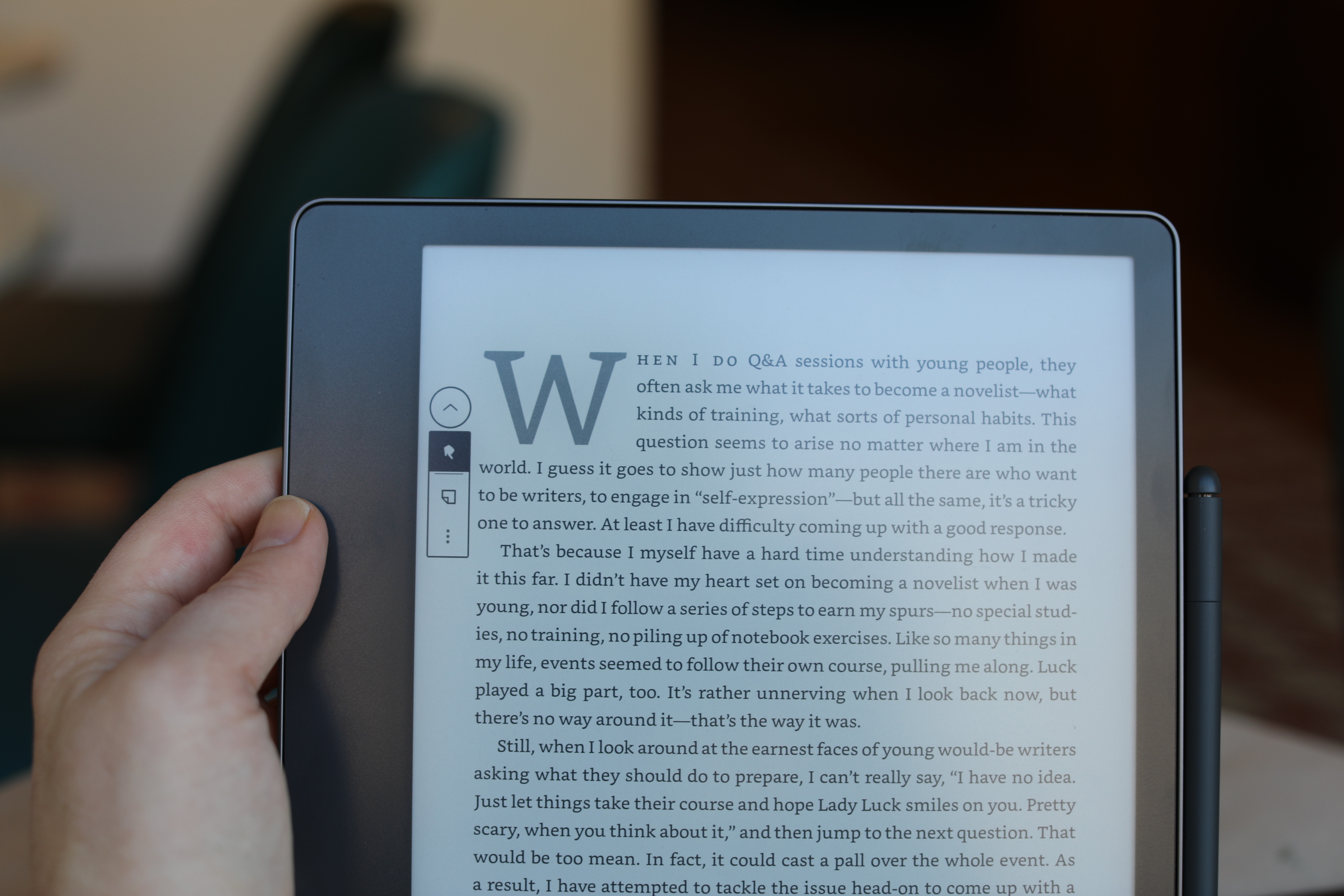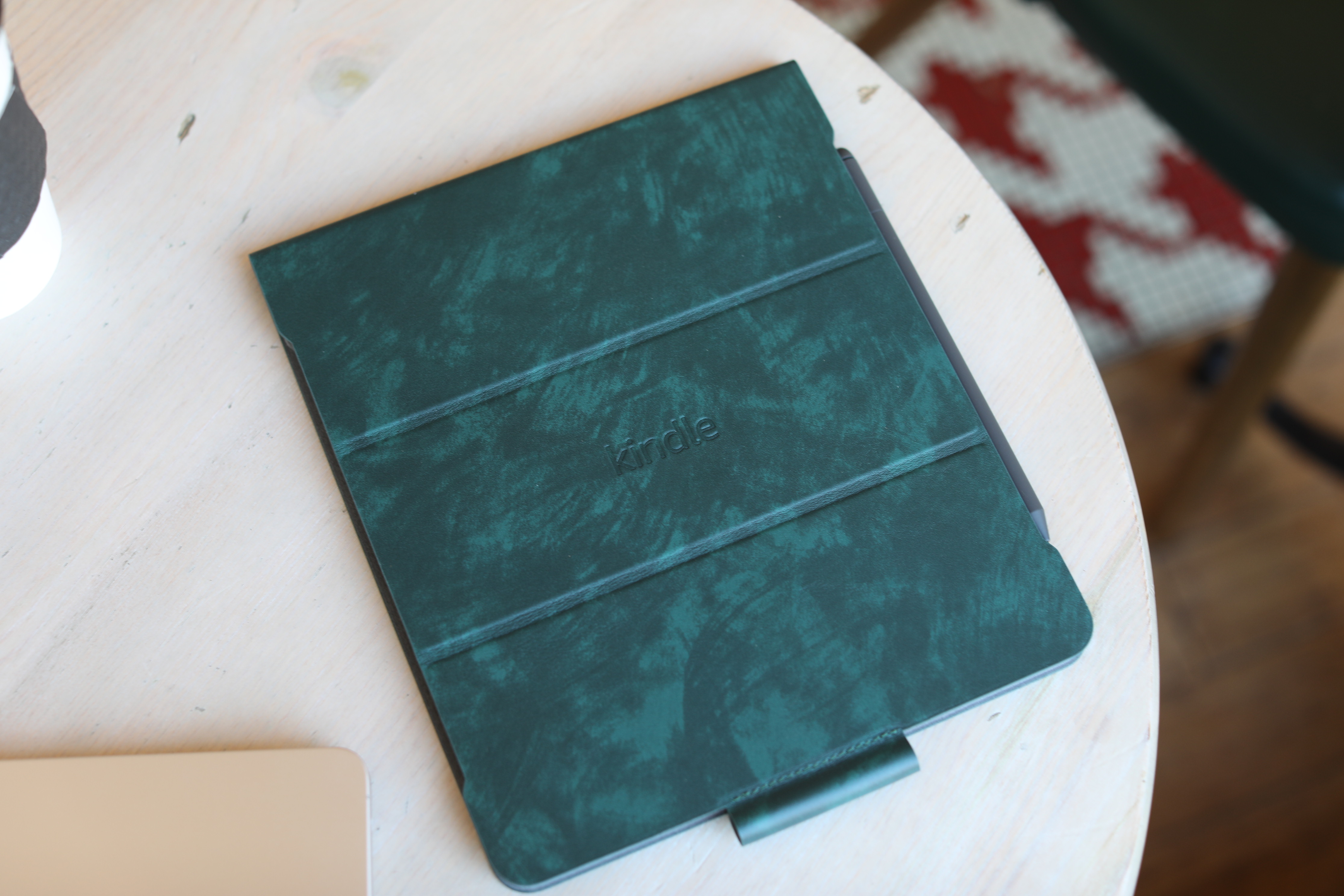Category: TECHNOLOGY
‘If you have too much, you can drown’ How tech PR’s job changed in 2022
Hello and welcome back to Equity, a podcast about the business of startups, where we unpack the numbers and nuance behind the headlines.
This is our Wednesday show, where we niche down to a single person, think about their work and unpack the rest. This week, Natasha interviewed Vijay Chattha, a startup comms leader who has spent over 20 years in the storytelling world. Chattha is the CEO and founder of VSC and founding partner of VSC Ventures, a $21 million investment vehicle to back startups.
Here’s what we spoke about:
- How his clients are reacting to the downturn in terms of their openness, vulnerability, and general hunger to tell their story
- The difference between pitching a VC and pitching a journalist (lol)
- How startup’s goal with media coverage can sometimes inherently clash with the media’s goal to cover a startup (and why we disagree on the importance of disclosing valuations)
- The best framework for the different types of media form out there, from Twitter to billboards to earned media.
- How the #MeToo movement impacted leadership styles and changed accountability for the better
- If we’re getting closer to a more transparent ecosystem, or more opaque one
- And of course, we end with a lightning round – including but not limited to Chattha’s biggest pet peeve with journalists.
Equity drops every Monday at 7 a.m. PT and Wednesday and Friday at 6 a.m. PT, so subscribe to us on Apple Podcasts, Overcast, Spotify and all the casts. TechCrunch also has a great show on crypto, a show that interviews founders, a show that details how our stories come together and more!
‘If you have too much, you can drown’ How tech PR’s job changed in 2022 by Natasha Mascarenhas originally published on TechCrunch
https://techcrunch.com/2022/11/30/startup-pitching-storytelling-tech-pr-2022/
San Francisco police can now use robots to kill
Last week, we talked about killer robots. That piece was inspired by a proposal that would allow San Francisco police to use robots for killing “when risk of loss of life to members of the public or officers is imminent and outweighs any other force option available to SFPD.” Last night, that proposal passed the city’s board of supervisors with an 8-3 vote.
The language was included in a new “Law Enforcement Equipment Policy” filed by the San Francisco Police Department in response to California Assembly Bill 481, which requires a written inventory of the military equipment utilized by law enforcement. The document submitted to the board of supervisors includes – among other things – the Lenco BearCat armored vehicle, flash-bang grenades and 15 submachine guns.
The inventory also names 17 robots owned by the SFPD – 12 of which are fully functioning. None are designed specifically for killing. They’re mostly used to detect and dispose of bombs – something police departments have been doing for years. The language included in the proposal effectively allows for these – or other – robots to kill in order to save the lives of officers or the public.
As we noted last week, the proposal seems to fit the definition of “justified” deadly force. Police in the U.S. are authorized to shoot when a situation meets a number of criteria, including self-defense and cases where others are facing death or serious bodily harm. A robot is not a gun, of course (though we are now aware of robots that sport guns), but the 8-3 vote effectively approves the weaponization of robots in these sorts of cases.
“Robots equipped in this manner would only be used in extreme circumstances to save or prevent further loss of innocent lives,” Allison Maxie, a spokesperson for SFPD said in a statement. Maxie added that robots could be armed with explosives, “to contact, incapacitate, or disorient violent, armed or dangerous suspect.”
Such applications certainly appear to run counter to the purpose for which these robots were both built and acquired. There is precedent for this, however. In July 2016, the Dallas Police Department killed a suspect using a robot armed with a bomb for what’s believed to be the first time in U.S. history. “We saw no other option but to use our bomb robot and place a device on its extension for it to detonate where the suspect was,” police chief David Brown told the press after the incident.
As more robots are being developed for military applications, it’s easy to see how such language could open the door for the acquisition of systems that are weaponized out of the box. Police use of military equipment has become commonplace in U.S. police departments in the wake of the National Defense Authorization Act for Fiscal Year 1997. Section 1033 of the bill allows for the military’s “transfer of excess personal property to support law enforcement activities” for the sake of drug enforcement. Maxie says the SFPD currently has no plans to stick guns on robots.
Last year, the Electronic Frontier Foundation warned of “mission creep” with regards to the use of armed robots, noting,
Time and time again, technologies given to police to use only in the most extreme circumstances make their way onto streets during protests or to respond to petty crime. For example, cell site simulators (often called “Stingrays”) were developed for use in foreign battlefields, brought home in the name of fighting “terrorism,” then used by law enforcement to catch immigrants and a man who stole $57 worth of food. Likewise, police have targeted BLM protesters with face surveillance and Amazon Ring doorbell cameras.
The proposal’s approval appears to run counter to San Francisco’s image as one America’s most liberal cities. The debate around the issue was lively, running more than two hours. It comes at a time when many left-leaning politicians are concerned about appearing antagonistic toward police.
“I think there’s larger questions raised when progressives and progressive policies start looking to the public like they are anti-police,” board member Rafael Mandelman noted during the meeting. “I think that is bad for progressives. I think it’s bad for this Board of Supervisors. I think it’s bad for Democrats nationally.”
SF’s Board of Supervisors Rules Committee chair Aaron Peskin had previously attempted to insert language condemning the use of robots for killing. The line, “Robots shall not be used as a Use of Force against any person” was reportedly crossed out by the SFPD.
Last month Oakland fought a similar battle across the Bay. Their debated ended differently. Following public backlash, the police department wrote,
The Oakland Police Department (OPD) is not adding armed remote vehicles to the department. OPD did take part in ad hoc committee discussions with the Oakland Police Commission and community members to explore all possible uses for the vehicle. However, after further discussions with the Chief and the Executive Team, the department decided it no longer wanted to explore that particular option.
San Francisco Board of Supervisors President used their own debate to warn against the impact of such proposal on people of color. “We continuously are being asked to do things in the name of increasing weaponry and opportunities for negative interaction between the police department and people of color,” he noted during the meeting. “This is just one of those things.”
San Francisco police can now use robots to kill by Brian Heater originally published on TechCrunch
https://techcrunch.com/2022/11/30/san-francisco-police-can-now-use-robots-to-kill/
CommonGround raises $25M for immersive video avatar technology that doesn’t rely on VR gear
The trials and tribulations that a giant company like Meta (née Facebook) has been facing in overcoming skepticism, creating user interest (let alone revenue) and building quality experiences for its all-in metaverse vision highlights just how much work lies ahead for any company working in mixed reality. Today, a startup in that bigger ecosystem, which believes it can fix one aspect of how this works — how we ourselves appear — is announcing some funding along with a beta of its live avatar software that has been years in the making.
CommonGround — an Israeli/Silicon Valley startup that has built technology for people to use their smartphones to scan their faces for responsive, real-time three-dimensional avatars that can be used in video applications — has raised $25 million, money that it is using both to continue developing its tech getting it launched into the world.
Marius Nacht, the co-founder and former chairman of CheckPoint Software, led the round, with VCs Grove, Matrix and StageOne also participating. The latter three are repeat backers: collectively, they invested $19 million in the CommonGround when it was still in stealth mode.
CommonGround actually raised this latest funding a year ago, but it chose to delay announcing until it had a product ready to show. Now, you can go to the site to scan yourself and create an avatar; in Q1 2023, the company plans to release the first application to use that avatar: meeting software where your likeness, or an idealized version of your likeness, will be able to sit around a virtual table to engage and respond to others in the conversation — complete with reactions and movements mirroring those you are making IRL. (For now, you can share the avatars with friends and put them into a dancing animation.)
Like “TrueSelf Scan,” the name of the initial application that’s used to scan a person’s image, the meeting software also will not require a VR headset to use and engage with: users will be “seated” in a room that will be shown on a video screen. Amir Bassan-Eskenazi, the CEO of CommonGround who co-founded the company with Ran Oz, said avatar preview link for now will work for the first 500 people, although it’s not clear how many will be able to speak concurrently on the conferencing app.
Why videoconferencing? The medium definitely had a moment in the spotlight with the arrival and peak of the Covid-19 pandemic and a huge shift of people opting to work remotely. Fast forward to today, with millions of hours in aggregate clocked up on services like Zoom, Microsoft’s Teams, Google’s Meet, WebEx and the many other videoconferencing apps out there, skeptics might argue that what we have on the market today has been good enough.
CommonGround’s bet is that the experience could be better, and when people are presented with an easy way of having that, they will use it.
“There is Zoom and there are phone calls, but we think there is a big aspect of remote meetings [not being addressed by technology today],” said Bassan-Eskenazi. “Our goal is to enable taking experience — closer connections — and making that digital. We think moving video conferencing from 2D to 3D could even make it better than face-to-face.”
The computer vision technology is built from the ground up — a project that seems to have started as early as 2019 and has been complex enough that this launch was postponed from its original target date of 2021. Based around machine learning, CommonGround’s platform is theoretically learning all the time from its users: the more you use it, the more you train it, and the more accurate it becomes.
And to be clear, the startup confirms that the tech is not in any way connected to what others are building around the same concept. One would-be competitor that I found comes from Avatar SDK, which is part of ItSeez3D, which itself was acquired by Intel several years ago — albeit not for this particular piece of technology, at least not at the time of the deal in 2016 (its USPs then were IOT and automotive applications).
Avatars have had a lot of currency in more fun, consumer-focused applications, and there have been a few examples of how AI and computer vision can spark delight in these when they become more anthropomorphic: Apple’s animated memoji, based on your facial expressions, can feel familiar and cute, if a little eery.
But Bassan-Eskenazi believes that avatars also very much have a place in enterprise environments. For one thing, the numbers of calls today that are made with the camera turned off — either because a person does not feel presentable or in the right environment for a call — are one use case: now you can continue to maintain your privacy while still making eye contact and responding to what others are saying, qualities that go a long way towards communication that might otherwise get lost in virtual environments.
And if you think immersive meetings are the future, you may not want to ever have them in VR. Although some have held the new wave of headsets as the answer to more immersive virtual meetings, there’s no question that wearing a headset for extended periods — those work meetings that could last for hours — is uncomfortable.
Whether the idea really catches on with businesses, and is as scalable as CommonGround believes it could be, are still bets that have yet to come good, but investors have been interested not least because of the pedigree of the founders. Between them, Bassan-Eskenazi and Oz have started seven companies, had three IPOs, two exits, and won two Emmy awards for streaming technology. That points to resourcefulness, and artificial intelligence technology with multipurpose potential at the end of the day.
CommonGround raises $25M for immersive video avatar technology that doesn’t rely on VR gear by Ingrid Lunden originally published on TechCrunch
DoorDash lays off 1,250 employees to rein in operating expenses
DoorDash is laying off 1,250 people in an effort to rein in costs, the company’s CEO Tony Xu said in a message to employees on Wednesday. Xu’s message notes that the pandemic presented unprecedented opportunities to serve merchants and consumers, and as a result, DoorDash sped up hiring to catch up with growth. Xu says although most of the company’s investments are paying off, it did not properly manage team growth.
“Most of our investments are paying off, and while we’ve always been disciplined in how we have managed our business and operational metrics, we were not as rigorous as we should have been in managing our team growth,” Xu wrote. “That’s on me. As a result, operating expenses grew quickly.”
This is the most difficult change to DoorDash that I’ve had to announce in our almost 10-year history. Today, we are reducing our corporate headcount and saying goodbye to many talented teammates. https://t.co/xSYUVLwp17
— Tony Xu (@t_xu) November 30, 2022
Xu says that given how quickly DoorDash hired, if the company did not address its operating expenses, they would continue to outgrow sales growth. He went on to note that DoorDash’s business is more resilient than other e-commerce companies.
“I did not take this decision lightly,” Xu wrote. “We have and will continue to reduce our non-headcount operating expenses, but that alone wouldn’t close the gap. This hard reality ultimately led me to make this painful decision to reduce our team size.”
Employees who are laid off will receive 13 weeks of compensation, along with one four-week lump-sum severance payment. Xu’s memo also says impacted workers will receive their February 2023 stock vest. For visa-sponsored workers, the termination date will be March 1, 2023. Xu says this decision will give them additional time to find a new job.
DoorDash joins a growing list of companies that have recently reduced their workforce, such as Meta, Amazon, Twitter and Lyft. Hiring in the tech industry significantly increased during the pandemic and has seen a harsh comedown as companies admit they grew expenses too rapidly for the current climate.
DoorDash lays off 1,250 employees to rein in operating expenses by Aisha Malik originally published on TechCrunch
https://techcrunch.com/2022/11/30/doordash-lays-off-1250-employees-to-rein-in-operating-expenses/
Amazon Kindle Scribe review
The Kindle turned 15 this month. It’s been a strange ride for Amazon’s first hardware device. CEO Andy Jassy gave the e-reader a rare bit of love in last year’s shareholder letter, noting:
Our first foray into devices was the Kindle, released in 2007. It was not the most sophisticated industrial design (it was creamy white in color and the corners were uncomfortable for some people to hold), but revolutionary because it offered customers the ability to download any of over 90,000 books (now millions) in 60 seconds—and we got better and faster at building attractive designs.
In the context of the letter, the device is simply a prelude. It’s the first step into a world that would include tablets, an army of smart home products, wearables and one ill-fated smartphone. It’s kind of perfect, really, for a product line that conquered the world and then took a backseat to the rest of Amazon’s offerings.
Before the September Kindle Scribe announcement, the line hadn’t received a SKU since the 2016 arrival of the premium Oasis. Sure, there have been refreshes over the years, but not even those have arrived with any sort of regularity. Prior to the long-awaited Paperwhite update that brought USB-C to the line roughly this time last year, Amazon hadn’t announced a single device refresh since summer 2019.
Image Credits: Brian Heater
Can you blame them? For starters, people keep their readers around for a long time. The batteries last forever, and they’re rarely subject to the same sort of daily abuse as our smartphones. Even more importantly, while Amazon’s isn’t the only game in town exactly, it sure feels like it sometimes. Sony, the one-time maker of very good readers, tapped out for good in 2014. Barnes & Noble — while not out of the Nook business entirely — seems to only exist to drop a minor refresh every few years, so don’t forget about it entirely.
Here in North America, Kobo presents the closest thing to actual competition for Amazon’s e-reader dominance. The Canadian-founded, Japanese-owned firm makes good readers that can hold their own against the Kindle, but Amazon utterly dominates the marketshare here in the States. Granted, these numbers are old (from 2018), but this study puts Amazon at a >80% marketshare in the U.S. If the iPhone commanded that much of the market, do you really think Apple would be falling over itself to present a major update each year?
But Amazon’s September device event brought two surprises. First, the entire thing was far more subdued than past years, with fewer products being announced. Of course, Amazon’s not alone in slowing down its product inventory ahead of uncertain times, and subsequent layoffs in the company’s devices division seem to point to that trend maintaining for the foreseeable future.

Image Credits: Brian Heater
Second, we got a new Kindle. Not an update to an existing Kindle, mind. A genuinely new product — and really, an entirely new product category for the line. For the duration of the Kindle’s life, it’s been a content consumption machine. It’s a place to read what other people have written. And while it’s understandable that the company dropped the physical keyboard found in its earliest iterations, the E Ink touch screen has been more miss than hit when it comes to typing.
The Scribe adds a seemingly simple feature that users have no doubt been requesting for the better part of a decade: pen-based writing. I spoke with the company ahead of the official announcement, and here’s where I landed with regards to why it took so long to implement:
The company says the fact that it didn’t launch a Kindle with this functionality earlier isn’t for lack of trying. Rather, it was important it get the tech right, while maintaining key features like front lighting and the line-wide 300 ppi display (compared to 226 on the reMarkable 2). Given the $90 price bump over the previously most expensive Kindle (Oasis), it certainly makes sense that the company would want to maintain those line-wide features. Amazon says it worked with E Ink Holdings (EIH) on the display, which it then customized to hit those specs.

Image Credits: Brian Heater
I will say, e-book reader owners are a forgiving bunch. Lags and refreshes come with the territory on e-ink devices. There’s a lot of stuff users wouldn’t put up with in other products, partly because they’re aware of the benefits of the technology (clearer/easier on the eyes, wildly good battery life) and partly because, well, it’s the only game in town. Whether you go Kindle or Kobo, you’re effectively working with the same basic technology.
Writing lag, on the other hand, is a different beast entirely. It’s the sort of thing that makes you want to huck your expensive new piece of plastic and glass across the room in a fit of rage — barring that, if the experience is bad enough, you’ll probably try it a few times before giving it up all together.
I’ve been pleasantly surprised on that front. I admit my expectations were lowered by more than a decade of using e-ink screens, but the Scribe provides a good note-taking experience. In fact, there’s a lot present here that will come as a pleasant surprise for anyone who has not updated their e-reader in a few years. While the experience continues to remain distinct from that of a standard tablet, Amazon has added little touches here and there to drag the product line kicking and screaming into 2022.
This starts with the design. The Scribe borrows a number of key elements from the Oasis. It’s amazing how much a flush glass display contributes to the overall premium feel. Also, like the Oasis, one of the side bezels is considerably larger than the other, presumably so you have a place to rest your hand while holding it that doesn’t trigger the touch display. Unlike the Oasis, however, there are no physical page-turn buttons on the surface, which feels like a missed opportunity.

Image Credits: Brian Heater
At 10.2-inches, this is the largest Kindle display by a considerable margin. Keep in mind, there was a relative statis in screen sizes for much of the product’s existence. The Kindle started off as a 6-inch device and the entry level model has stayed there for a decade and a half, as though the company had found a kind of platonic e-reader ideal.
There have been derivations from the number, of course. The Kindle Oasis 2 pushed the screen to seven inches, and the latest Paperwhite isn’t far behind at 6.8 inches. But to get anywhere near the Scribe’s size, we’re going to have to travel back in time even further to the DX. Introduced in 2009, the short-lived product is a bit of an anomaly on the Kindle flowchart. With a 9.7-inch display, the device found the company stepping outside the Kindle’s core book reading functionality.
The pitch largely revolved around PDFs and newspapers. 2009 was a time when it seemed there might still be a viable market for people who really wanted to read broadsheets in something close to their original form. The viability of that market aside, the truth is the technology just wasn’t ready. As frustrating as e-ink can be today, dealing with images was a nightmare then, both in terms of resolution (everything felt like one of those WSJ stipple drawings) and refresh times. A full-page refresh for every fraction of an inch an image was moved is my version of walking to school uphill both ways in the snow.
Also, much like smartphone space, larger screens required larger device footprints than they do today. The Scribe is a large screen reader that doesn’t feel like a brick. I mean, I certainly can’t carry it around in a pocket the way I can other Kindles, but I don’t feel silly reading on it during a long train ride. At 433 grams, it’s a touch lighter than the 10.2-inch iPad (487 grams). The dimensions are similar, as well, with a different, reading-focused, aspect ratio. The Scribe is 9.0 x 7.7 x 0.22 to the iPad’s 9.8 x 6.8 x 0.29.

Image Credits: Brian Heater
The 9.7-inch Kindle DX, on the other hand, measured in at 10.4 x 7.2 x 0.4 inches, with a weight of 535 grams. Perhaps the DX was simply a product ahead of its time. It was an idea for which the hardware simply wasn’t quite ready. Newspaper purists (well, not purist enough to still want a Kindle) may have been an evolutionary dead end, but plenty of folks — especially those with vision impairments — could have benefited from a larger screen.
Certainly, the larger screen makes a lot of sense on a product like the Scribe that’s designed specifically for handwriting and drawings. It does fill that long dormant gap of a truly large-screen Kindle, but the $340 starting price is almost certainly going to be a stumbling block for many. The former highest-end Kindle — the Oasis — has a starting MSRP of $250, and as I type this, Amazon has it marked down to $165.
Some of the Kindle’s most premium design elements have become a foundational piece for the Scribe. The rear of the device is all metal — almost a, dare I say, iPad-like design. There are small rubber feet in each of the device’s four corners to keep it from sliding around on a desk. It’s full flat back there — without the sunken design you find on the back of the Oasis. I imagine this is due, in part, to the fact that the Scribe is a two-hander, when it comes to reading. It’s a fairly large and reasonably heavy device that feels much more like a tablet than any devoted e-reader I’ve ever used in the past.
On the right side is the device’s single physical button. A single short press will wake up the device or put it to sleep. A longer press will pop up a dialogue box asking if you want to turn the screen off (for further battery saving) or restart it. There’s no option to power it off entirely. To the button’s right is the USB-C port.

Image Credits: Brian Heater
For years, it felt like Amazon might never move on from micro-USB. I keep the cable around exclusively for my Kindle Oasis. It’s nice knowing I can charge the Scribe with the same cord I use for practically (ahem, iPhone) everything these days. The Scribe ships with a USB-A to USB-C cable, rather than straight USB-C. Not sure if that says more about Amazon or their perceived userbase for the product, but again, one of the big selling points with the new port is that you likely already have a couple of those cables already lying around.
Many of the recent improvements arrive on the software side. If you’ve got a mobile device handy, you can use it for quick setup. Sign into the Kindle app on mobile, click “Amazon Device Simple Setup” and “Set up with your phone” on the device, and you’ll be up and running with a synced library in a minute or two.
I’m a longtime Calibre user. In recent years, Kindle Oasis+Calibre has been an ideal e-reader experience. The app is good for a number of different things, but the topline feature (for me, at least), is the ability to convert ePub files to a Kindle format and send them directly to the reader. It’s long been the best workaround for Amazon’s walled garden approach to selling books. Earlier this year, however, the company finally added support for ePub, the default e-book format outside of the Kindleverse.
Add to that some big improvements to features like Send-to-Kindle and the company’s taken a big dent out of what made Calibre a great third-party app for many users. There are still reasons to use the service, of course, including an off-device method for organizing your files, but Amazon’s dramatically improved the experience for people who want to purchase books outside of the Kindle store.
For years, the entire Send-to-Kindle experience was lacking. Getting files onto and off of the device was a much bigger chore than it had any right to be. In its current iteration, Send-to-Kindle web is one of those things that feels like it should have been there from the outset. Open a browser, sign in and you can drop files directly into the interface. After a few minutes, Kindles connected to that account (and Wi-Fi) will sync, with the file appearing in their library. It’s not magic, exactly, but after so many years of what felt like pointless complexity, it kind of feels like it.
Streamlining Send-to-Kindle is particularly important, given that the ability to take notes on the device is central to the Scribe experience. It’s a way to send a PDF or other document directly to the device for markup. To get them off the device, tap Share and from there you can either do a “quick send” to the email associated with your Kindle account or manually enter another address. After a couple of minutes, the recipient will receive an email with the subject line, “Someone sent you a notebook from their Kindle.” Click Download and it will surface a version of the file hosted on AWS.
The other primary use for handwriting is taking notes in the book reading experience. If you’re someone who likes to make copious annotations, it could be a handy feature. While reading on Scribe, a small menu pops up in the left margin. Tapping on this lets you leave notes in specific spots within the text. There’s certainly potential value there for students and researchers who don’t want to juggle between devices to take notes.

Image Credits: Brian Heater
The Scribe ships with a basic pen that magnetically snaps to the side of the device for safe keeping. Upgrading to the premium pen will add another $30 to the base price (this is the review unit Amazon sent along). The basic and premium pens can also be purchased on their own for $30 and $60, respectively, but keep in mind, the Scribe is the only Kindle they currently work with.
The premium pen adds a devoted button to switch between pen and highlighter functionality — I found myself accidentally triggering it from time to time, so that takes a bit of getting used to. It also has a built-in eraser on the top. Flip the pen over and apply some pressure against the screen to depress it and it will remove your marks (after a slight refresh delay). The pen is a passive stylus and doesn’t require any charging — so that’s one less thing to worry about.
The writing experience is solid for a first-gen product like this. There isn’t enough notable latency to truly be annoying. The pen against screen has a nice tactile sensation to it, along with a built-in sound that almost approximates pencil on paper. You can choose between five line thicknesses — though fair warning, the thinner the line gets, the clearer the pixelation becomes on the display.
The experience is good enough for note taking and even basic doodling, but it’s not going to replace a Wacom — or even iPad — any time soon for serious artists. That said, I can certainly see dropping this in a backpack to replace a coffee shop sketchbook or even getting some roughs down on the page before really drawing in earnest. The addition of drawing adds an exciting new dimension to the 15-year-old line. For now, it’s not necessary for most users, but it will be interesting to watch it develop over future generations.

Image Credits: Brian Heater
At 300 DPI, the Scribe sports the same pixel density as the rest of the line. It’s great for reading and does a good job rendering black and white images. The system is actually a really great size and shape for reading comics. You’ll obviously lose something important if they were published in color, but for manga and a lot of independent press (see: early Love & Rockets pages above), reading PDFs are actually a pretty good experience. Refresh rates have dramatically improved over the years, though you’ll still run into some imperfections like ghosts of images after you’ve turned the page.
For reading text, however, you still can’t beat e-ink. It’s the easiest on the eyes and battery life. I quite enjoyed the larger page format, as well, though the device’s size means it’s a bit tough to read while lying down. Rather than holding it above my head, I found myself mostly reading on my side while in bed. If you’re purely looking for a casual reading device, again, the Scribe is overkill.
If the Scribe feels fully formed for a first-generation device, it’s because it was built on generations of Kindle iterations before it. The front light, for example, is great. The Scribe has 35 LEDs to the Oasis’s 25, presumably due to the larger size. Earlier generations had issues with uniformity, but Amazon has much improved on that front. Using a Kindle in 2022 makes you wonder how you got by before the advent of features like the auto adjusting light and warm light for before bed.
Interestingly, the Scribe and entry-level Kindle are the only two current devices in the line that aren’t IPX8 waterproof. My guess is you’ll probably get by okay without it 99+% of the time, but it’s curious to see the feature skipped in only the least and most expensive entries. There’s also no cellular option for the Scribe (again, interesting, given that it’s the default on the Oasis). It’s one of those things that’s nice to have (especially on the road), but you can get on perfectly well without.

Image Credits: Brian Heater
As ever, there’s a web browser on board, and as ever, the Kindle is a less than ideal way to surf the web. Adding to the usual input, latency and formatting issues, it seemed to have difficulty rending basic language, as seen above.
Bluetooth, on the other hand, is now standard across devices. Pairing headphones with the Kindle is basically the same process as on a mobile device. There are some nice accessibility options there, with the availability of text to speech. You can also use the Kindle to listen to Audible downloads, though I’m still having trouble thinking of too many scenarios in which it makes more sense to listen to an audio book with a Kindle device versus the Audible app on a smartphone (though I admit that I rarely listen to audio books at all).

Image Credits: Brian Heater
As with other Kindle, battery is listed in weeks, rather than hours or days. That’s thanks in large part to the e-ink display. Due to the new content creation element, there are additional storage options. The Scribe comes in 16GB, 32GB and 64GB flavors. Only the 16GB version is available with the basic pen at the moment. The 32GB version will run you $390, while the 64GB is $420, meaning the top-end unit (with the default premium pen) is another $80 over the base price.
The leather cover is quite nice — and honestly, a cover of some kind is necessary if you’re going to be tossing this thing in a book bag. That will run you another $99. In addition to protecting the screen and back from scratches, the pen loop at the bottom is more secure than the magnetic connection. The cover can also be flipped back to serve as a stand, propping up the Scribe at a slight angle designed for writing/drawing.

Image Credits: Brian Heater
It’s exciting seeing the Kindle take on an entirely new dimension after all these years, but for a majority of users, the price premium over the rest of the line is probably not commensurate with the value add. It’s also $40 over the starting price for the reMarkable 2 — though you don’t have buy into a monthly subscription fee here, and you also get a lot of existing Kindle ecosystem functionality.
For most people in most scenarios, the Scribe is going to be overkill, but it’s nice seeing Amazon explore new territory with a product line that is too often overlooked.
Amazon Kindle Scribe review by Brian Heater originally published on TechCrunch
https://techcrunch.com/2022/11/30/amazon-kindle-scribe-review/
Honda to launch fuel cell vehicle in 2024
Honda will launch a fuel cell electric vehicle in 2024 based on its bestselling CR-V crossover.
The automaker said it will produce the CR-V variant at its Performance Manufacturing Center (PMC) in Marysville, Ohio, as part of its strategy to go fully electric by 2040 and carbon neutral by 2050. Instead of a battery, fuel cells use hydrogen and oxygen to create electricity that powers the vehicle.
Honda’s vehicle will be one of the first models to combine a plug-in feature with fuel cell technology, enabling the driver to switch between its onboard battery for shorter trips and hydrogen supply for longer trips.
The company didn’t say how many units it plans to build but noted that the factory specializes in small volume vehicles like the Acura NSX supercar.
Fuel cells boast a distant advantage over battery electric vehicles because they can be refueled in three to four minutes and travel longer distances before replenishing the power supply. However, the technology is not ready for mass adoption. The U.S. network of public hydrogen stations is concentrated in California and in much shorter supply than EV chargers.
Toyota, Honda and General Motors have been developing fuel cell technology over the last two decades. Toyota’s Mirai mid-size sedan heading into its second generation. Honda, which launched its first fuel cell vehicle, the FCX, in 2002, has invested more than $14 million in California’s hydrogen refueling network.
Other manufacturers are incorporating hydrogen into their strategy for going carbon neutral.
BMW and Toyota said in August that they will team up to produce hydrogen fuel cell vehicles starting mid-decade. By 2024, Bosch plans to invest more than $1 billion globally to develop fuel cell technologies, including more than $200 million to build fuel cell stacks for commercial trucks at its South Carolina factory.
Honda will release more details about the CR-V-based fuel cell SUV closer to its launch. The automaker launched the sixth-generation CR-V this year and expects the crossover’s hybrid version to represent half of the nameplate’s annual sales.
Honda to launch fuel cell vehicle in 2024 by Jaclyn Trop originally published on TechCrunch
https://techcrunch.com/2022/11/30/honda-to-launch-fuel-cell-vehicle-in-2024/
Transforming old cardboard boxes into insulation nets CleanFiber $10 million round
It’s the middle of the holiday season here in the U.S., that magical time between Thanksgiving and Christmas when stores are packed with bodies and porches are piled with packages.
All those packages produce a lot of waste — anywhere from 33 million tons to 51 million tons annually, depending on the estimate. A majority of it gets recycled, but there’s still a significant fraction that finds its way into landfills.
It’s the last day of the TechCrunch+ Cyber Monday sale! Head here for details, and don’t miss out!
One startup has a plan to slash that fraction while also cutting the carbon footprint of people’s homes. Buffalo-based CleanFiber takes used cardboard boxes and turns them into cellulose insulation that can be blown into the walls and attics of new and existing homes.
As building products go, cellulose insulation is pretty special. Because it’s insulation, it lowers energy use. It’s relatively high-performance and low-cost. And it’s made almost entirely from recycled materials, which means it lowers a building’s embodied carbon, or how much pollution is wrapped up in its materials.
Typically, cellulose insulation is made by shredding old newspapers, but as the newspaper industry has declined over the last 20 years, so too has the supply of newsprint.
“At one point in time, there were about 13 million tons of newsprint produced annually in North America,” CleanFiber CEO Jonathan Strimling told TechCrunch. Today, “it’s on the order of 1 million tons and continues to fall.”
That decline got industry insiders interested in using corrugated boxes in lieu of newsprint. But they knew they couldn’t reuse the same processes. Bales of newsprint are pretty homogeneous, whereas bales of old corrugated containers are laced with shipping labels, plastic sleeves, and various kinds of tape. Simply shredding that and sending it through a cellulose blower would gum up the works and make for some very unhappy installers.
Transforming old cardboard boxes into insulation nets CleanFiber $10 million round by Tim De Chant originally published on TechCrunch
Airbnb is helping find renters an apartment so they can Airbnb it
Airbnb really wants you to Airbnb an apartment. So its latest step is to find renters a place, which they can also list on the travel booking platform.
Today, the company introduced a new program called ‘Airbnb-friendly apartments’ in the US. It allows renters to find an apartment in more than 25 markets — including Austin, Houston, Phoenix, Jacksonville, Los Angeles, Miami San Diego, Sacramento, and Tampa — where they can Airbnb a spare room, or the whole apartment while they’re away.
At the launch, the company partnered with local building owners to list 175 “Airbnb-friendly” apartments across different regions. Renters can head to the company’s dedicated site for the program and hunt for properties in a specific location. Once you select an apartment, you can use an earnings calculator that estimates how much you can earn from listing the place on Airbnb.
Image Credits: Airbnb
You can directly contact the building manager from Airbnb’s site to schedule a tour of the property. On the program FAQ, Airbnb specifies that it doesn’t own any of these properties. It also mentions that renters will have to follow local laws and building rules about putting their place on Airbnb, along with the company’s own community guidelines. Rental and lease agreements are handled directly between landlords and renters, however, with Airbnb staying removed from that part of the process.
Airbnb claimed that in a recent poll conducted by the company — results of which are not public — three-quarters of “US adults support allowing renters to share their apartments on a short-term basis.” The company has presumably struck up a partnership with property owners to allow renters to list their properties on a platform and earn some money from the arrangement. However, Airbnb didn’t disclose specifics of its partnership arrangements.
“Traditionally, renters have been excluded from sharing their homes part-time because of strict lease terms. We think this program will help more renters benefit from Hosting on Airbnb to earn extra money to help cover the rising cost of living,” the company said in an email response.
Airbnb mentioned that while it doesn’t take a cut from the rent, building owners “take a revenue share of between 20-25% of a host’s booking amount.”
Airbnb and its hosts have been blamed in the past for listing out properties without proper permission. Earlier this month, New York City published stricter rules for hosts asking them to submit full diagrams of the listed property along with proof that the property is a permanent resident. In France, it’s mandatory for the renters to take written permission from the landlord to sublet the house. Last year, the city of Paris fined Airbnb $9.6 million for hosting illegal listings that were not properly registered with the authorities.
The company said that its new program gives access to tools that property managers can use to view and approve listing listings, see the number of hosts and booked guests at any time, and put a cap on annual nights that could be listed on Airbnb. These tools also give the ability for property managers the to detective or pause the listing in case a host breaks the building rules.
The travel booking company — which already has more than 4 million hosts on its service — wants to build a vast network of hosts on the platform. Earlier this month, it released new tools for hosts including a guided setup with a super host and better coverage for damages. At that time, CEO Brian Chesky told TechCrunch that he doesn’t want to “get to a supply-constrained era” when it comes to hosts. The Airbnb-friendly apartment program is another way for the company to have more listings on its platform.
Update November 30, 8:45 PM IST: Post updated with responses from Airbnb about tools available to property managers.
Airbnb is helping find renters an apartment so they can Airbnb it by Ivan Mehta originally published on TechCrunch
ResortPass, backed by Jessica Alba and Gwyneth Paltrow, lands $26M so you can take a daycation
Have you ever looked longingly at the website of a posh hotel or resort and thought, “Man, I wish I could hang out there.”
Well, thanks to startup ResortPass, that might not be as out of reach as you might think.
The six-year-old company gives people the option to purchase day passes to over 900 hotels and resorts – think Ritz Carlton, Four Seasons, W Hotels, Hyatt Hotels, Fairmont and Westin – around the world. With the passes, users have access to amenities such as pools, spas and fitness centers without having to shell out the big bucks to actually stay overnight.
ResortPass itself serves as a marketplace, teaming up users with hotels and taking a cut of each booking. As COVID-19 pandemic restrictions have eased and people are eager to make up for lost time, the company says it has seen a surge in business with a 100% increase in gross booking volume so far in 2022 compared to 2021. In other words, it has doubled its number of users.
The startup works with the properties to help determine prices, which generally reflect the level of service and amenities that a hotel offers. For example, a day pass to access a pool can range from $25 to $100 per adult depending on the hotel. Children generally pay less, or are free.
Beyond its marketplace offering, ResortPass has also built SaaS software to make it easier for the hotel industry to support day guest access. The rationale is that ResortPass provides a new revenue stream for these hotels, by giving them a way to allow for more guests – on a per day basis. In fact, ResortPass claims to have delivered over $1 million in new booking revenue to “many” of its individual hotel partners. Since inception, the startup says it has teamed up 1.6 million guests to its partner hotels. While it’s free for hotels to join ResortPass, many do subscribe to its access management and booking software tools, which also can give overnight guests the ability to book amenities on the premises.
ResortPass currently operates mostly within the United States – in 35 states including Florida, California, New York, Hawaii, Oklahoma and Arizona. But it’s seeing such good traction in recently-entered markets outside the U.S. such as the Caribbean, Mexico and Puerto Rico that it plans to eventually further expand into new geographies such as Europe and the Asia-Pacific region. To fuel that geographic expansion, ResortPass is announcing today that it has raised $26 million in a Series B funding round co-led by Declaration Partners and 14W, bringing its total raised to $37 million. Early backer CRV also participated in the financing, along with new investors such as William Morris Endeavor, Adam Grant, celebrity entrepreneurs Gwyneth Paltrow and Jessica Alba and Brian Kelly, also known as The Points Guy.
Also investing was Airbnb’s syndicate, AirAngels. This makes sense considering both Airbnb and ResortPass have aimed to create new markets out of underutilized inventory.
New York-based ResortPass is also announcing today that Michael Wolf – who previously worked at ClassPass, Supernatural, and Lululemon – has assumed the role of CEO. Amanda Szabo founded ResortPass in 2016 and served as its chief executive until late in the third quarter. As the company has grown, Szabo decided that it would benefit from having a leader with extensive experience in working with marketplaces to help it scale. She will serve in an advisory capacity moving forward.
“She [Amanda] was a 0 to 1 person,” Wolf told TechCrunch. “I’m a one-to-many person. And, I was impressed with how the company had built a really strong business without a lot of capital.”
He added: “It’s genuinely the most excited I have been about a company having worked across dozens of startups.”
Geographically, in the short term, ResortPass is looking to expand “more completely” throughout the U.S. and the Caribbean.
“We’re seeing incredibly strong performance from our hotels outside the U.S.,” Wolf told TechCrunch in an interview. “Some properties in Puerto Rico are among the top performing hotels in the entire system.”
Longer term, ResortPass will add additional overseas markets such as Europe and the Asia-Pacific region as well as more hotel partners.
Interestingly, the majority of ResortPass’s users are locals who want to experience the amenities of hotels in their own or nearby cities. “Our local users never had the opportunity to access the hospitality industry locally,” Wolf said. “They thought they had to get on a plane to enjoy those sorts of amenities.”
Travelers who stay at an Airbnb in a city for the extra space but still want access to amenities such as a nice pool or fitness center represent another segment of ResortPass’s customers. Another popular use case are cruise passengers who dock in a city and want to be able to access a nice property just for the day, or get off of a cruise ship well before their flight and don’t want to sit in an airport all day.
When booking users, Wolf says ResortPass aims to “emulate the normal operating flow of a hotel” so that the guests simply blend in.
The “vast majority” of ResortPass’s users come across its offering through word of mouth, according to Wolf.
With its new capital, the company plans to beef up its team across all departments, including sales, marketing, product and operations. Presently, it has about 50 employees – 20 of whom are engineers. ResortPass is not currently profitable, but Wolf says the company’s user growth is reflected in nearly all of its business metrics.
The company had previously raised about $11 million, including $9 million in a Series A that was announced in August of 2019. Wolf declined to reveal at which valuation this latest round was raised, saying only that it was done “at over 2.5x the valuation of the last round.”
Via email, CRV General Partner Saar Gur noted that his firm led ResortPass’s seed and Series A rounds based on its belief that the company “delivered a unique and delightful experience to consumers, while adding significant incremental profits to their hotel partners with no additional cost.”
14W’s Ryan Ackell is also naturally bullish. “ResortPass is pioneering a whole new segment of the $1.5 trillion global lodging industry,” he said in a written statement. “By creating this opportunity for hotels and guests, ResortPass is aligning the industry with how people are choosing to take time off with shorter, more frequent experiences closer to home.”
ResortPass, backed by Jessica Alba and Gwyneth Paltrow, lands $26M so you can take a daycation by Mary Ann Azevedo originally published on TechCrunch
Natives Rising wins backing to help Native Americans into tech and startups
According to the Natives Rising has now received grant funding to support and grow the number of Native American women graduating college with computing degrees, as well as provide a path towards entrepreneurship.
The grant was from the Reboot Representation Tech Coalition, a group of 21 tech companies which aims to double the number of Black, Latina, and Native American women receiving computing degrees by 2025, by making philanthropic investments in relevant programs.
Natives Rising now aims to recruit Native women to join the tech industry, plus provide scholarships, mentors, education, and workplace opportunities.
In a statement Dwana Franklin-Davis, CEO, Reboot Representation said: “Building culturally relevant education and pathways can build bridges by showing Native American students how tech relates to their experiences. We’re proud to partner with Natives Rising to create vibrant, viable pathways in tech.”
Currently, only 3 percent on college-level programs get philanthropic funding whereas 66 percent is spent on K–12 programs, showing a wide gap where an untapped opportunity exists.
Natives Rising also runs the Natives Rising Founders Circle as an incubator for Native founders, especially founders interested in venture capital funding.
Danielle Forward, CEO, Co-Founder of Natives Rising added: “Native Americans are the most impoverished group in the US, a vestige of intergenerational, systematic disenfranchisement. They are also being hit the hardest by inflation right now, as a result. While the tech industry is slowing down on hiring, tech jobs remain one of the most economically empowering, in demand job opportunities of the future, especially for those who desire remote work.”
Prior to Natives Rising, Forward (Cloverdale Rancheria of Pomo Indians) was a Product Designer for 5 years at Meta. Co-founder and Chief Impact Officer Betsy Fore (Turtle Mountain Chippewa) joined after previously co-founding Wondermento and Tiny Organics. Hannah Cirelli (Quechan Tribe of Fort Yuma) joined as co-founder and Chief Community Officer, in addition to her current role in diversity at Uber.
Natives Rising is a nonprofit organization with Indigenous community members spanning over one hundred tribes. While focused on the US, the organization has developed an international following to economically empower Indigenous communities through tech careers and entrepreneurship.
Natives Rising wins backing to help Native Americans into tech and startups by Mike Butcher originally published on TechCrunch

